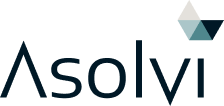Remtek Systems Ltd provides a vital and much needed service to students with a disability. Operating throughout the UK, Remtek supply assistive technology, solutions and training to enable people with disabilities to access higher and further education. The company, founded in 1974 and operating from its headquarters in Salford in the north-west of England, primarily supplies laptops to students. Clearly, their business is not just about supplying equipment, but also about assessing users’ requirements and then also ensuring that they are set up correctly, both technically and ergonomically, and appropriately trained.
In the early 2000s, Remtek realised that they needed to automate their business, to boost efficiency and ensure that the whole operation was as well organised as possible. At the time, they selected a solution called Service Accent, which served their needs well for many years. However, when Service Accent was acquired by Asolvi in 2019, Remtek decided to use this as an opportunity to review their service management and, in particular, take a good look at the other solutions in the Asolvi portfolio. After a thorough review of their requirements and an assessment of a variety of solutions, the team decided that Asolvi’s Tesseract solution was the one that they would adopt. As a flexible, comprehensive, cloud-based solution, Tesseract not only met the current requirements, but also offered the element of future-proofing that Remtek was looking for.
As John Farrar, one of the directors at Remtek, emphasises, there were several immediate benefits of moving to Tesseract: “It gave us additional flexibility straightaway, so we were able to review our processes in the light of Tesseract functionality and managed to reduce what was a total of around 50 different processes down to about 15. That flexibility also applied to our team of engineers, who, thanks to the mobile app, were able to do far more for themselves when it came to re-allocating jobs. Some of our clients have mobility or transport issues, so cannot always be at the right location at the right time, through no fault of their own. This means that our engineers sometimes have to make adjustments to schedules while they are on the road and Tesseract gave them that autonomy.”
However, as John emphasises, there were also cost savings to be achieved: “To maximise efficiency and to ensure their safety, we need to know where our engineers are. Previously, we had GPS devices to do this, but we were able to eliminate that cost, as Tesseract allowed us to see where the team was at all times.” In addition, Tesseract also enabled Remtek to operate more efficiently by automating what had previously been manual processes. This covered not only the booking and engineer allocation process at the customer-facing end, but also shipping and other back-end logistical issues. As John says, “Tesseract’s API has the breadth to enable us to automate and integrate to save more time and effort”. Remtek have also made good use of the reporting functions within Tesseract and this has enabled them to look at their business and spot areas for further efficiency gains.
While the emphasis has been on automation and reducing manual processes, John is also keen to acknowledge the human aspect to the Tesseract implementation; “The Asolvi project manager was also instrumental in making this a success. He had a great ‘can do’ attitude which helped us to get up to speed quickly”.
Remtek has several plans for deepening its use of Tesseract, particularly in the mobile area. However, for the meantime, Tesseract is helping Remtek to stay flexible and deal with the challenges that the Covid pandemic has thrown up. As John Farrar concludes; “These days, you have got to be ahead of the curve and IT cannot be an obstacle to that. Tesseract has enabled us to stay ahead.”





